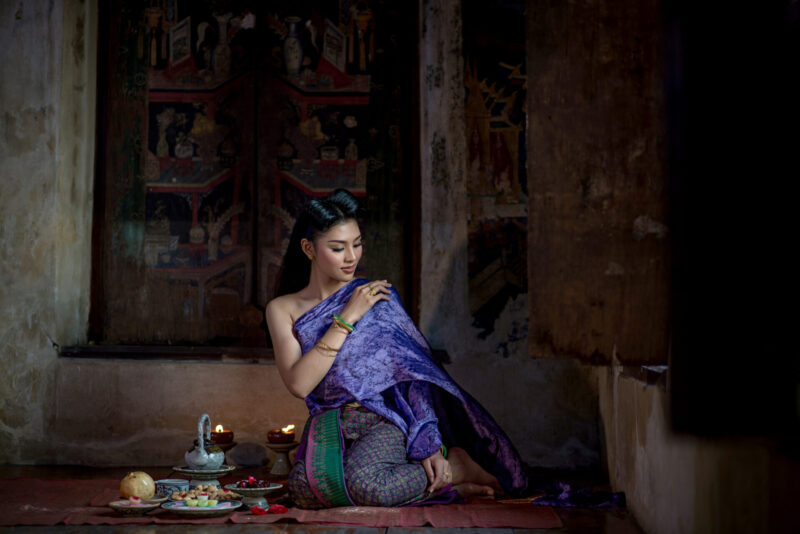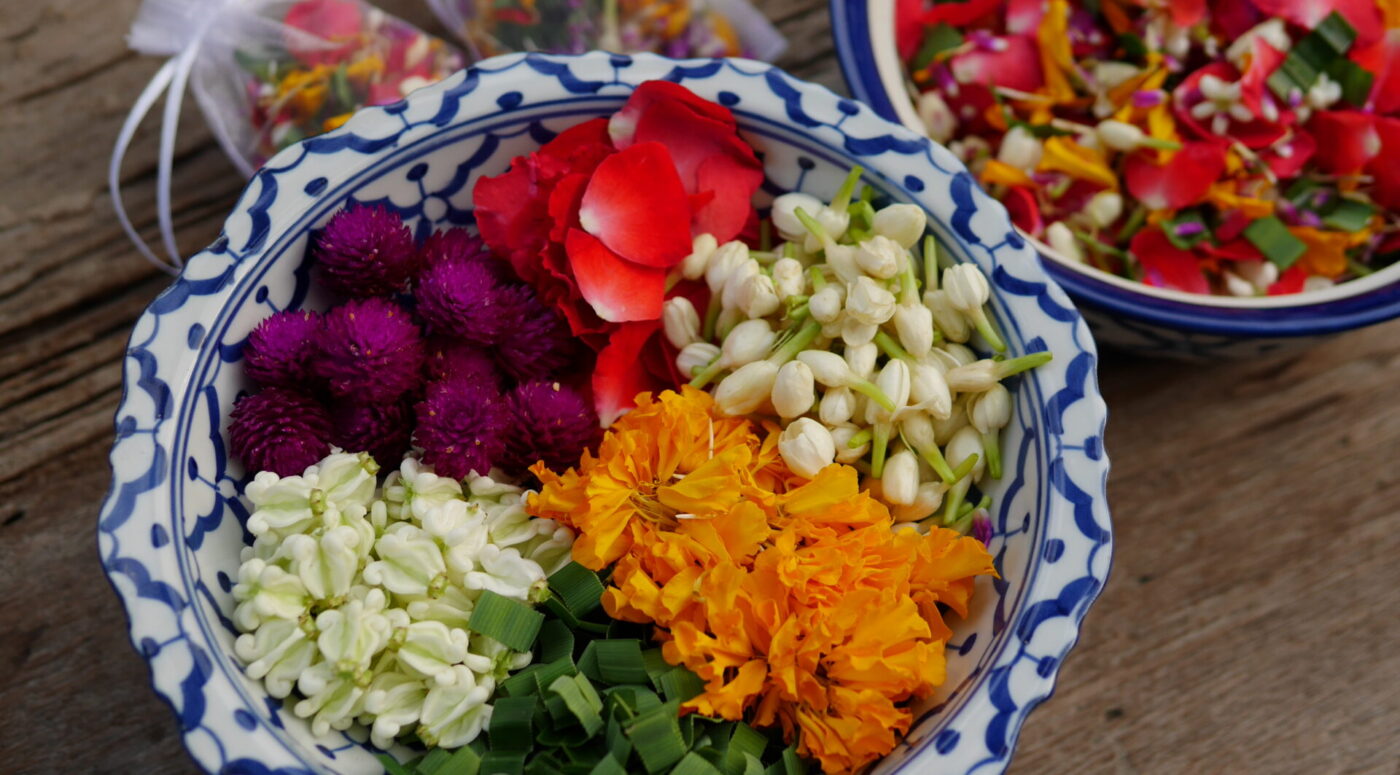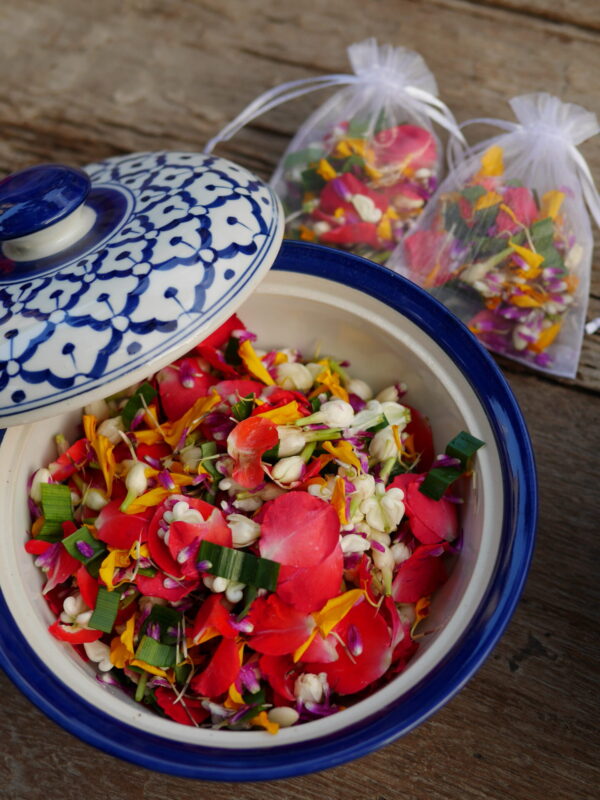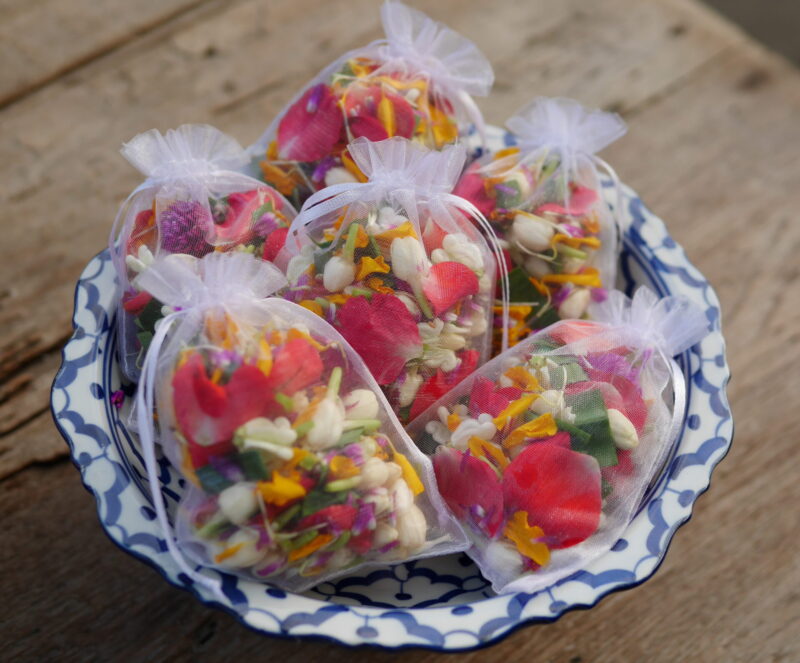From the delicate scent of royal garments worn by women in the palace to its use in auspicious ceremonies and religious rituals, this fragrant blend embodies the ancient traditions of the Kingdom. It is a scent that not only evokes the country’s storied past but also intimately links history to Thailand’s rich olfactory heritage.
The Meaning and Origins of ‘Bu Nga Ram Pai’
The origins of Bu Nga Ram Pai trace back to the late Ayutthaya period, when it first emerged as a royal fragrance. Mentioned in the Kap He Ruea: He Chom Mai poem by Prince Thammathibet Chaiyachet Suriyawong (Prince Kung/Chao Fah Kung), the term Bu Nga refers to “flower,” while Ram Pai denotes “various kinds” or “a mixture.” Together, these words symbolize the harmonious blending of different flowers, capturing the diversity of Thailand’s flora and beauty of the nature.

The creation of Bu Nga Ram Pai is an art form passed down through the centuries. Comprising flower petals from Thai jasmine, Pikul (Bullet Wood), Thai ylang-ylang, and Damask rose, it first gained popularity in the royal court during the reign of King Rama V — a period considered the golden age of Thai perfumery. What began as an exclusive scent reserved for the palace soon became cherished by the broader public, transforming into a favored gift during celebratory occasions such as royal birthdays and state events. Each royal residence boasted its own secret formula, ensuring that the fragrance remained as elusive and refined as it was captivating. Today, the art of crafting Bu Nga Ram Pai continues to thrive, a testament to its timeless allure.










